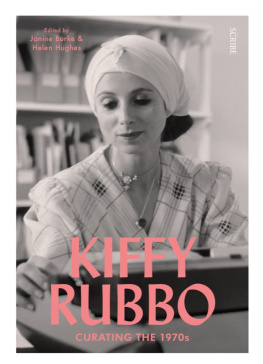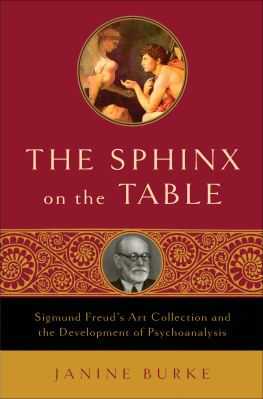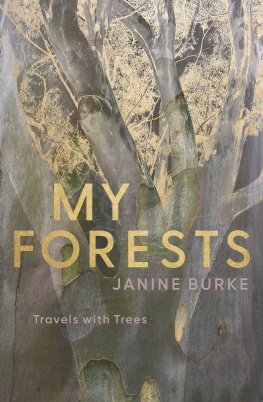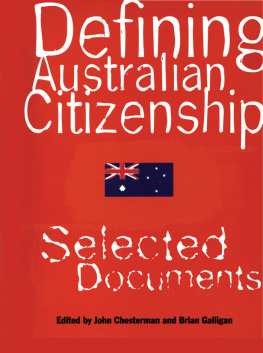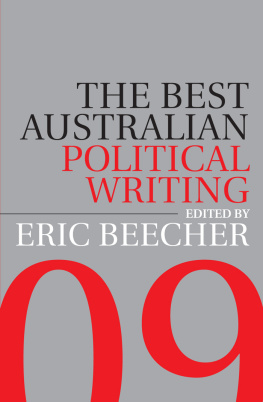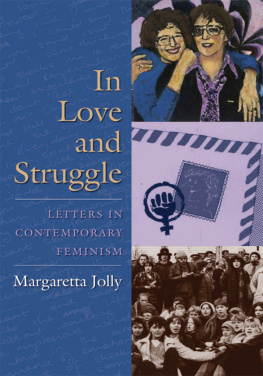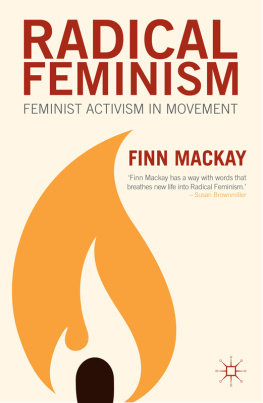
KIFFY RUBBO
Janine Burke is an author, art historian, curator, and novelist. She has published twenty books, including Australian Gothic: a life of Albert Tucker (2002), The Heart Garden: Sunday Reed and Heide (2004), The Gods of Freud: Sigmund Freuds art collection (2006), and Nest: the art of birds (2012). Janine won the 1986 Victorian Premiers Award for Fiction. She has been the recipient of residencies and grants including an Australia Council for the Arts Established Writers Grant (2014). Janine is Honorary Senior Fellow, Victorian College of the Arts, University of Melbourne.
Helen Hughes is Research Curator at Monash University Museum of Art, Assistant Lecturer in Art History and Curatorial Practice at Monash University, and is a co-founder and co-editor of the contemporary art journal Discipline .
Scribe Publications
1820 Edward St, Brunswick 3056, Victoria, Australia
2 John Street, London, Clerkenwell, WC1N 2ES, United Kingdom
Published by Scribe 2016
Copyright this collection Scribe 2016
Copyright in individual contributions copyright retained by individual copyright holders
All rights reserved. Without limiting the rights under copyright reserved above, no part of this publication may be reproduced, stored in or introduced into a retrieval system, or transmitted, in any form or by any means (electronic, mechanical, photocopying, recording or otherwise) without the prior written permission of the publishers of this book.
Front cover photograph: Kiffy Rubbo, George Paton Gallery, c.1979. Photo by Robert Rooney. Courtesy Tolarno Galleries.
9781925321395 (paperback edition)
9781925307863 (e-book)
A CiP record for this title is available from the National Library of Australia.
scribepublications.com.au
scribepublications.co.uk
I was lucky enough to fall briefly, but memorably, within the aura of Kiffy Rubbo and her pioneering curatorial work during my 1975 visit to Australia. I met some wonderful women who have remained friends for decades. All our exchanges confirmed our passionate belief that women coming together and supporting each other in art and life would change the world ... still a work in progress.
Lucy R. Lippard
CONTENTS
Bridie Carter
Janine Burke and Helen Hughes in conversation
Frances Lindsay
Meredith Rogers
Jaynie Anderson
Grazia Gunn
Stelarc
Janine Burke
Rachel Fensham
Peter Tyndall
Elizabeth Gower
Peter Cripps
Domenico de Clario
Matthew Perkins
Micky Allan
Shaune Lakin
Jill Orr
Anne Marsh
Lyndal Jones
Sandra Bridie
Janine Burke interviews Lesley Dumbrell
, 19661980
, 19721979
Anna Rubbo
FOREWORD
Bridie Carter
The George Paton Gallery, or the Ewing Gallery, as some people knew it, was always and will always be far more than a space in a university to exhibit art to me. Not merely because it was, in its time, a touchstone of the beginning of many artists careers, but also because it became a curatorial home for my mother, Kiffy Dattilo Rubbo, to work from. This hothouse, initiated by her, was a communal space where she enabled and encouraged artists to experience, fulfil, and often realise their true potential when they themselves, as an individual or group, could not. She curated with faith, not fear. With integrity, not superficiality. With intense devotion, dedication, and love. My mum did many great things for many great artists. She guided and walked alongside, and was not afraid to ask, to push, to demand when needed. A formidable female force through the 70s, her influence and initiation is not forgotten, not dismissed, but often silently put aside because of the tragic nature of her death. As much as my mum was passionate, she was sad. As much as she loved deeply, she could not be. Some people, I believe, are not for this world. It is too difficult, too brittle, too hard. But my mums life continues in all the paint on canvas, in all the clay held warmly in hands, in all the people whom she touched at some time as a gifted curator and, more than often, dear friend. And of course she lives on lovingly and wonderfully fiercely in my brother, Barny, and myself. We both thank all the contributors of this book, for her legacy having a little light shone upon it. It truly means so much.
INTRODUCTION
Janine Burke and Helen Hughes in conversation
Helen Hughes: In August 2014, you organised a conference on the life and work of Melbourne curator and gallery director Kiffy Rubbo. What prompted you to do this? And what were you hoping to achieve by asking the conferences numerous contributors to reflect on Kiffys legacy?
Janine Burke: The previous year, Id co-launched with Meredith Rogers a wonderfully rich archival exhibition at the George Paton Gallery (GPG), titled Creativity and Correspondence: the George Paton Gallery archive 19711990 . I found it a powerful and very moving experience because on display was a photograph of Kiffy and me, as well as letters between us discussing Australian Women Artists: 18401940 , which wed dreamed up and which she commissioned me to curate in 1975.
When it was my turn to speak at the launch, all these strong memories came pouring out as I recalled Kiffys commitment and passion for art, as well as her faith in me as a young curator. It hit me that her enormous contribution to the Australian art scene had never fully been recognised. After Id finished speaking, I walked straight up to Mark (Kiffys younger brother) and said, Weve got to do something on Kiffy, and he immediately said, Yes, and it should be here at Melbourne Uni. Thats how it began.
The Rubbo family was, of course, the first port of call for the project. As was Sandra Bridie, the current director of the George Paton Gallery, who was deeply involved from the get-go.
Because Id been so immersed in the gallery in the 1970s and had seen most of the exhibitions, performances, et cetera, that formed its program, it was a relatively easy matter to draw up a list of significant artists, curators, and historians who had either contributed to the gallery in those years or who had subsequently produced substantial research on it. Helen Vivians edited book When You Think About Art: the Ewing and George Paton galleries 19712008 (2008) provided a helpful resource, too. And, gosh, of course it was a trip down memory lane at times exhilarating and at others very sad and painful. Everyone we contacted was thrilled and moved to be involved, you know, to commemorate Kiffy. Of course, it was the circumstances of Kiffys death, her suicide in 1980, which made the process distressing. Will always make it distressing. But I hoped to go further, to frame Kiffy within her time, her ideas, her vision, her oeuvre, so her memory was not limited by the circumstances of her death.
I viewed the symposium, and this book, as the beginning of the process of positioning Kiffy securely within Australian visual culture. Its a process Im familiar with from my work on both Joy Hester and Sunday Reed. And what Ive learned is that this process of historicising an undervalued or ignored female cultural figure can take a long time, much longer than you initially conceive. Its a manoeuvre that needs to be strategic bold and strong as well as subtle and complex. Of course, the talent has to be there in the first place, and Kiffy had that in spades. Now we can begin to discern the dimensions of her achievement, which was really on a grand scale.
But let me ask you, as a young contemporary arts writer and curator, how you view the conference and your work on the book? What connections are there for you? And what are the dissonances?
Next page
